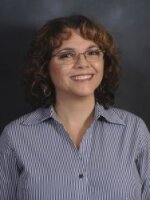As the University of West Florida wraps up this year’s diversity climate survey, we’re shifting the focus to diversity in enrollment at the university.
Specifically, WUWF is taking a look at the status of the enrollment, retention and graduation of African-American students at the institution.
We begin the conversation about UWF’s Black student enrollment with a look at current data, as listed on the university's website, from the fall of 2021.
“UWF enrolls about 12,000 students, give or take, anytime we measure. And, overall, our current African-American student enrollment is 11%,” said Dr. Greg Tomso, recently appointed as UWF’s interim vice president for academic engagement and student affairs. He’s also interim chief diversity officer.
Eleven percent translates to about 1,400 (1,459) African-American students out of the university’s total headcount (undergraduate and graduate) of about 13,000 (13,265).
That’s on par with UWF’s enrollment of Hispanics (10.4%) and a combined category of other ethnicities (9.94%), not including Asians (3.7%).
Over the past five years, Black student enrollment has been pretty stable, dipping by just one percentage point.
“The trend is pretty good,” Tomso affirmed. “We’re holding steady around that 11% mark. The national average is — depending on whose studies you look at — anywhere between 12 to 15%. So, we really are almost there at the national average.”

Historically, data shows the university has made significant gains.
“If you look at the fall of 1991, 5.27% of students at UWF were African-American,” said Tomso, referencing statistics from 30 years ago.
“If you look at last fall, the fall of 2021, 11% of our students were African-American, so that means we have doubled the percentage of African-American student enrollment and that is a great trend.”
While Dr. Tomso thinks the University is doing really well, he cautions against getting too focused on the numbers.
“But, to really drill down to look at, 'Well, are students enrolling, are they staying, and are they graduating,'" he proposed. “Because even though we’re doing great in overall enrollment, I have a real story to tell you about how we’ve improved in the areas of student retention and graduation.”
Before shifting to student retention and graduation, we’ll take a moment to focus on the potential impact of admission requirements on the recruitment and acceptance of African-American students. Tomso points to the nationwide issue of access due to the use of standardized test scores.
“They tend to favor students who are white,” said Tomso, pointing out that all minority students, including African-American students, struggle to have access, to the same testing prep, the same funding, and all of the things that can help students succeed in “playing the game” of taking these national standardized tests.
“There are definite system disparities in those areas that do create access issues for African-American students.”
According to Tomso, one of the best things the university can do to address the disparities in access is to continue to create pipeline programs with local schools, at the high school and middle school levels, and possibly even younger.
“We have some successful partnerships already, and I would love to see those expanded when funding becomes available because we need to create a culture that says 'We are college-bound,' he declared.
“And, we need to create opportunities for students to understand how to be successful when they apply to college and university.”

While getting African-American students through the admissions process is an important first step, Dr. Tomso believes that sophomore retention may be more telling, and he says UWF has made great strides in this area in the last few years.
“In 2015, our retention rate for African-American students was 64.4%. If you look at our 2020 retention rate, it was 85% and that is a huge, huge jump,” he proudly proclaimed.
“So, what that tells you is that we’re not just admitting black students and saying, ‘Look at our enrollment.’ But, we’re making a commitment to those students to ensure that they remain here and that they are successful,” he said.
To help on this front, Dr. Tomso says there’s a concerted effort underway to ensure that UWF is a campus where everyone can feel that they belong and can have access to transformational experiences.
“They (students) can have access to cultural experiences, social experiences, living-learning communities, not to mention curriculum that reflects the wide-range of issues that we face in our world today; issues that are important to students of color, African-American students to all of our different students, all of our different students, our military veterans, those with disabilities.”
Tomso says it’s been a process of learning what it takes for retention success on a college campus, and there’s much more to be explored on that front. But, he notes what they’re doing in terms of recruitment and retention is translating into improved four-year graduation rates among Black students.
“At UWF five years ago, we were at a 38% graduation rate and we’re up to a 44% graduation rate now,” he said.
According to Tomso, the key to boosting the graduation rate is building stronger programs, getting more students engaged, and identifying and breaking down those barriers to graduation, whether they be financial, familial, academic, or otherwise.
“We have to figure out where the problems lie and begin to address them,” he said of what it takes to get students to the finish line. “And, we are building capacity all the time in working with our students in figuring out the individual solutions that they need so that they can make timely progress towards their degrees.”


